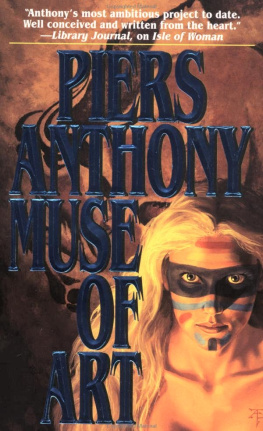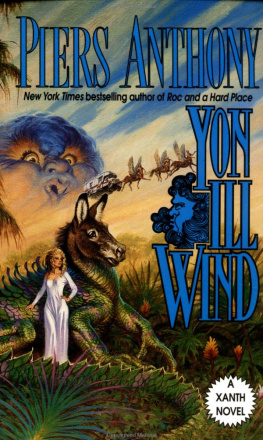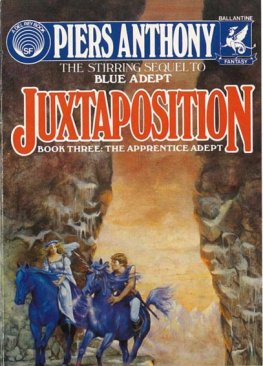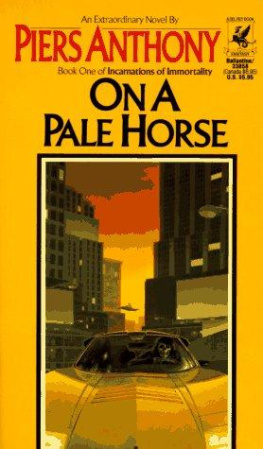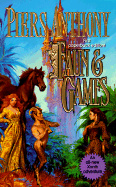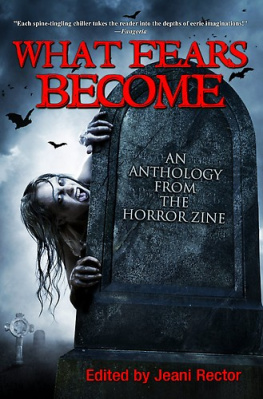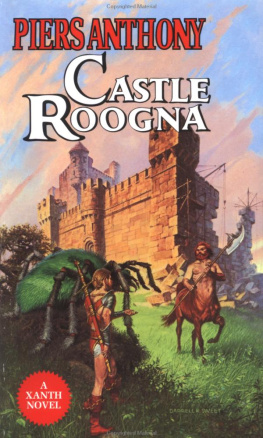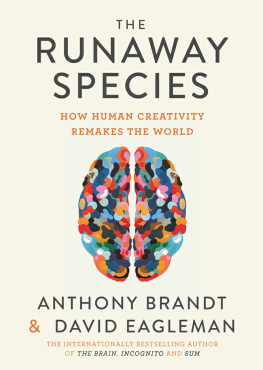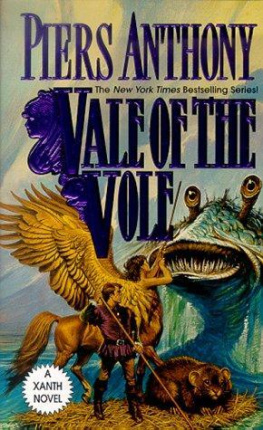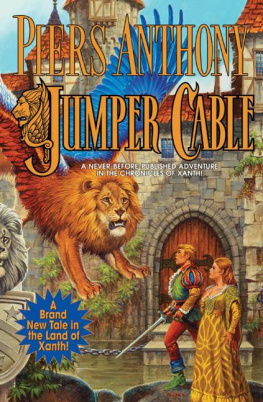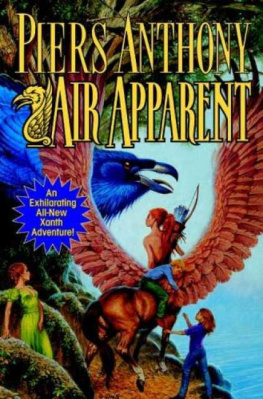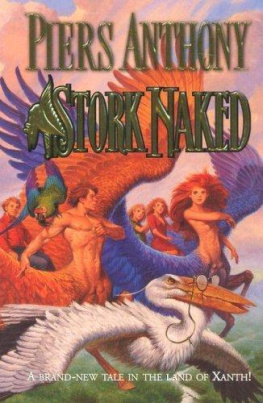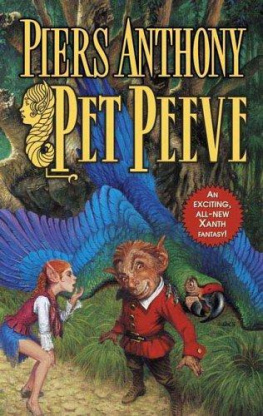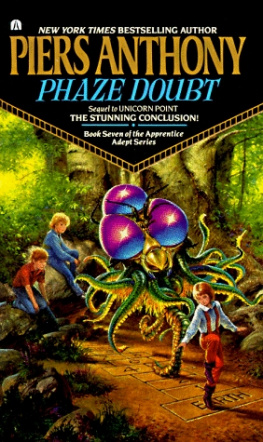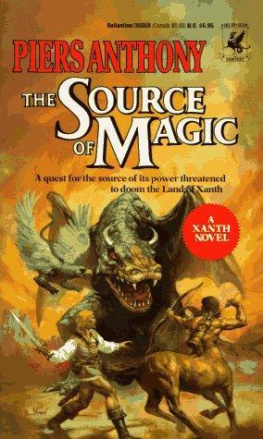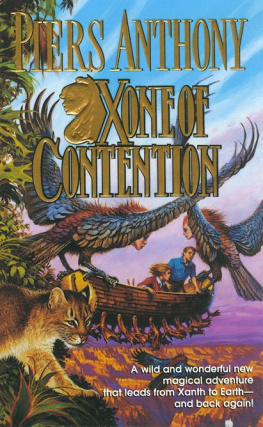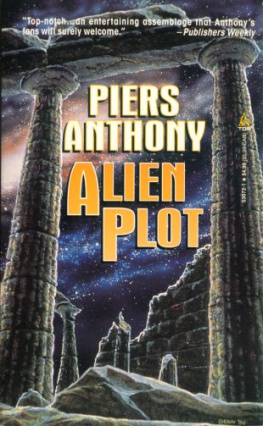Piers Anthony
Muse of Art
Geodyssey: Volume 4
CONTENTS
INTRODUCTION
ABOUT sixty-five million years ago there was a holocaust on Earth, thought to have been caused by bombardment by meteors and/or monstrous volcanic eruptions, with perhaps attendant rising of gas from the depths of the seas. The mystery has been in the pattern of survivals. There seems to have been considerable randomness. Some reptiles survived, while all the dinosaurs perished. Some mammals survived, though most perished. Some birds survived, similarly, and some fish and other sea life. The survivors hardly seemed better qualified than the species that went extinct. So what was it that set them apart? Sheer luck, or something else?
It may indeed have been something else. The survivors may have been those best protected from the fires and freezes and fumes of air, land, and sea. They were the creatures who dwelt in the deep caves: small insectivores, lichen eaters, and those that preyed on them. The environment of such reaches is constant, even when there are dramatic changes above.
So it may have been that in time the cave dwellers emerged to discover a depleted realm. It was now safe to go beyond the protected depths, and to expand into the larger realm. So they did, radiating into new populations. Among them were the line that became the monkeys, primates, and finally mankind. Of course it wasn't quite that simple, and there can be considerable interest in the nuances.
This is the fourth volume in the GEODYSSEY seriesGeo as in geography, Odyssey as in a phenomenal journeyfollowing Isle of Woman, Shame of Man, and Hope of Earth. The series concerns the evolution and history of our species from the distant past to the near future. Each volume is an independent novel which may be read alone; they all cover the same larger territory, but differ in detail. Each tells the story of a particular family or group of people. Though the total span covered in this volume is half a million years, the main characters are so similar in nature and relationships as to seem continuous, and may be viewed as identical. What changes is their settings, as different aspects of the progress of the human species are explored.
Any creature who deviates too far from his most familiar haunts or customs increases his personal risk. So most who wander, perish. Yet there are rare occasions when the wanderer discovers a better situation, and prospers, while those who remain behind find themselves on a treadmill to extinction. As with mutations, more than 99 percent of deviations may be lethal, but the other 1 percent lead to improved survival, and in the course of time (much time!) the future of the species lies in the 1 percent. Timing counts, too; what is at one time lethal may at another time be the key to survival. So evolution can be devious, and the "correct" decisions may be obscure to the point of denial at the key times of divergence from the norm. One divergence of mankind from all other life forms on Earth is in the realm of the arts. The point in the arts remains obscure to many people (and all animals) even today, yet these arts are vital to the nature of our species. This novel explores a number of them, with the concept defined extremely broadly. Each chapter tackles an art and a historical setting, showing how the two may have interacted in the larger (or smaller) context of the ongoing story.
The major characters of this volume are original to it, but supplementary characters from the three prior volumes do appear on occasion, at the ages and in the situations relevant to the time and geography of the particular settings in which they appear. That is, a person who was young in Roman times in his volume of origin will be young in Roman times in this volume. A person who was a dancer in her own volume will appear as a dancer here. It is, after all, one world.
There is a problem with names, as few single names can properly represent a particular character in time and cultures ranging across half a million years of global history. Accordingly, no particular effort has been made to have realistic names; they are simply convenient identifiers. The real names of such folk would surely have been quite different.
Those who prefer to follow only the story line may skip the italicized material prefacing and concluding each chapter, and the concluding Author's Note. But I hope that most readers will find the nonfictive material intriguing too. It is, after all, the point of the volume and the series. The entertainment value is the sugar coating to make readers who might otherwise be uninterested pay attention. This is, bluntly, a message novel, and the message is that our species has much to recommend it, but is also a threat to the welfare of the natural world and to itself. Those who are turned off by that are welcome to read my funny fantasy instead.
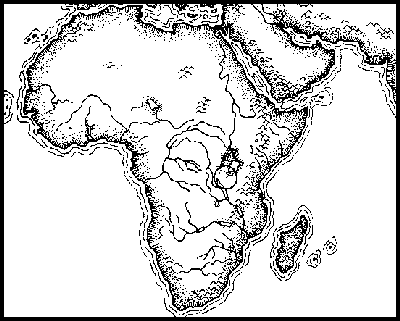
CHAPTER 1
CURIOSITY
Two million years ago, Homo erectus (henceforth simply Erectus) emerged from Africa and conquered the world. As he settled in different regions and climates, he adapted to local conditions, starting the familiar process of speciation. One might suppose that changes would be most extreme in the farthest reaches of the world, but that may not have been the case. The continent of Africa is as varied as any, ranging from the vast Sahara Desert to tropical jungles to snow-covered mountains. One of the most striking features is the Great Rift Valley, which may have been responsible for the distinctive evolution of Australopithecus, Homo habilis, Homo erectus, and finally modern mankind. Most of the fossils of early hominids have been found there. This does not necessarily mean that this was the source; it could be that the species were resident elsewhere, but the conditions were not suitable to preserve their bones. So that only those who happened to die in the Rift made fossils. But for the purpose of this novel, it is assumed that the Rift was the source, and this chapter suggests why. The locale is the mountain range bounding the northeast shore of Lake Tanganyika, not far south of the equator. Lake Victoria is across the plains to the northeast. Erectus lives both on the plain and in the mountains, and has a common culture, but the two habitats are so different that already the transition between them is not easy. This is bound to lead to relative genetic isolation of the population residing in the geographically isolated Rift. The time is half a million years before the present era: 500,000 B.P.E.
Curiosity might seem like (no pun) a curious art. But just about anything can become an art if pursued appropriately. In the Introduction the ratio of mutations is mentioned, wherein more than 99 percent are harmful, but the 1 percent account for progress necessary to long-range survival. It may be similar, if less extreme, for character traits. The curious cat may have died, but the curious human being may have set foot on a path to ultimate satisfaction. For in the dangerous exploration of the unknown lies the key to rare knowledge.
THE fire mountain struck so suddenly that it caught Od off-guard. He had watched it warily for days as it rumbled and shook and belched roiling clouds of smoke. He knew it was dangerous, but his insatiable curiosity had drawn him in anyway. Just what kind of wood did it burn, to make such smoke? What was going on, down inside the mountain? Could he find a way inside, to see the source of the mystery? But then it blew out such fierce smoke, and drooled flowing fire, and suddenly Od could not go back the way he had come.

